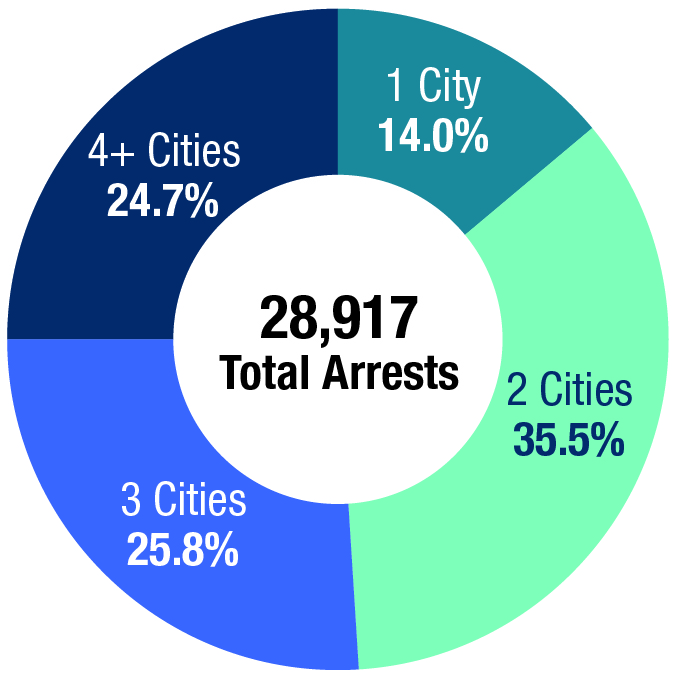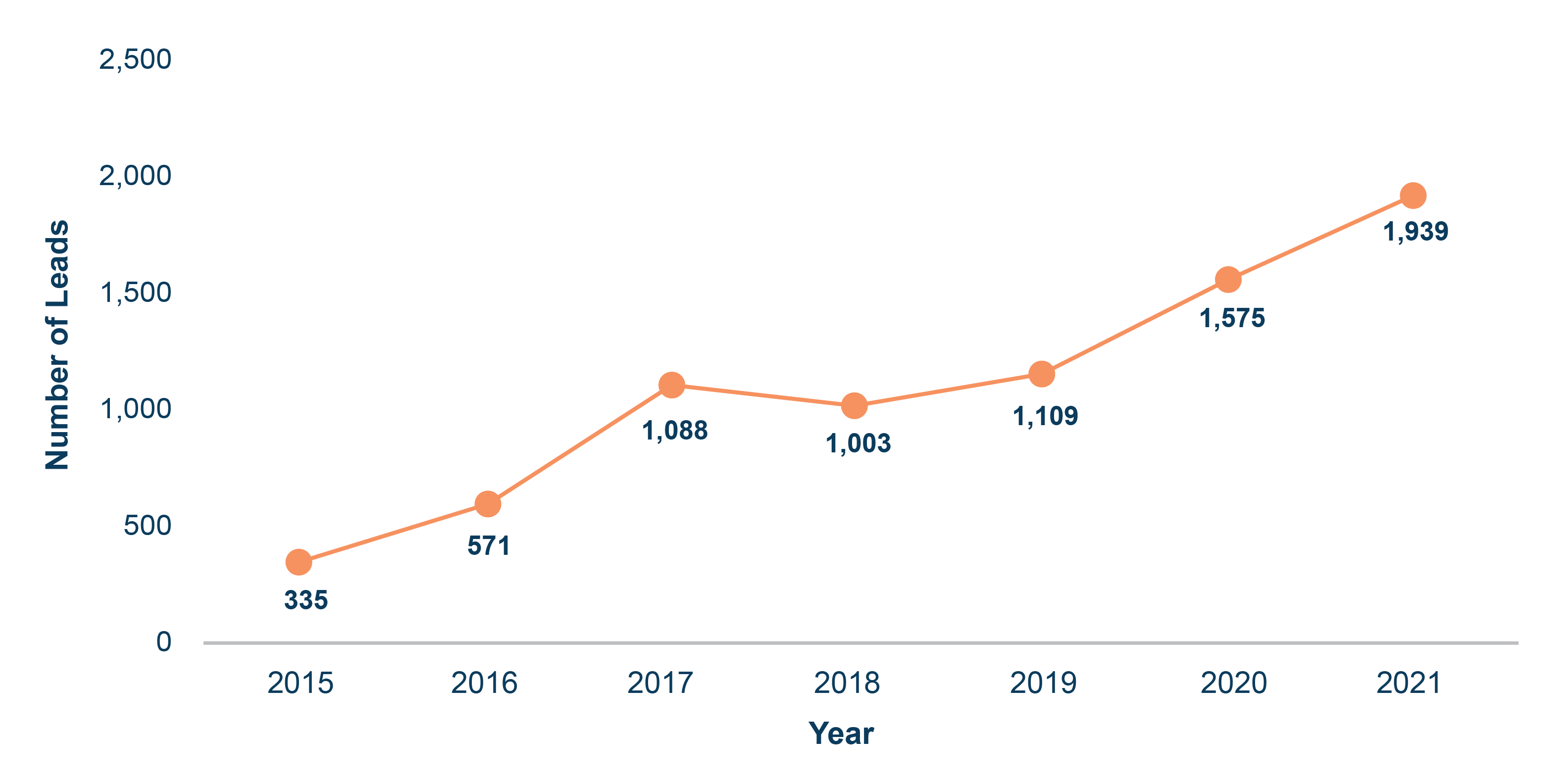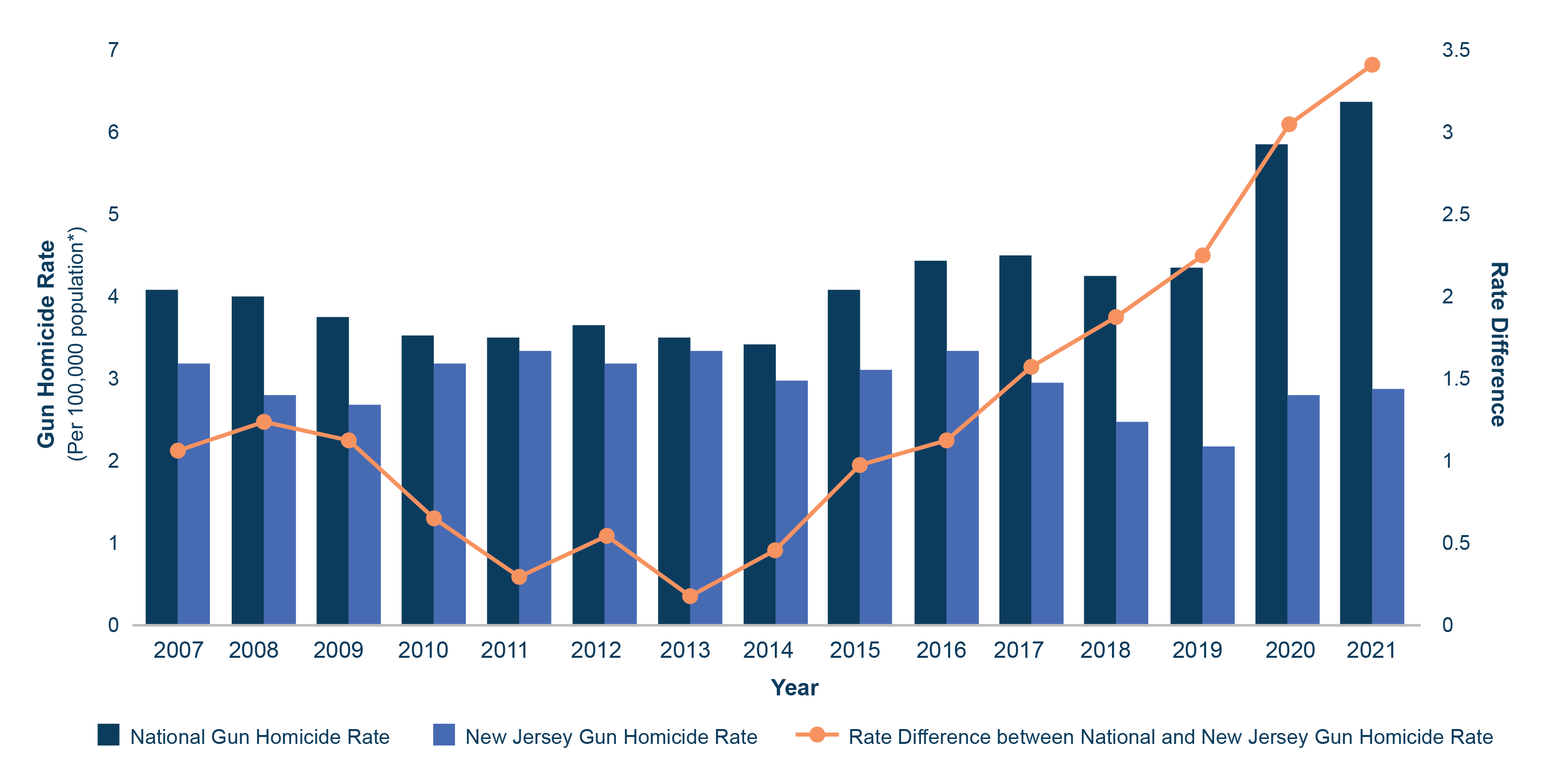In 2006, New Jersey initiated a comprehensive gun violence reduction strategy, becoming the first in the country to create a long-term statewide, multi-jurisdictional program that relied upon the integration of data and intelligence from multiple sources. Spanning 15 years, the effort improved over time, transforming the investigative culture of all participating agencies. The key was sharing and analyzing information across forensic, criminal intelligence, and investigative entities at all levels of government — local, state, and federal — to support violent crime suppression.
NIJ sponsored Dr. Glenn Pierce and Dr. David Lambert, criminologists from Northeastern University’s School of Criminology and Criminal Justice and Roger Williams University’s School of Justice Studies respectively, to evaluate New Jersey’s gun violence reduction strategy, documenting the state’s process of collection, integration, and analysis of firearms, ballistics, crime gun tracing, and intelligence data and the impact of that effort on violent crimes.
Overall, the researchers found that New Jersey’s strategy enhanced investigations and resulted in new leads.
The Strategy
The innovative, comprehensive gun violence prevention strategy in New Jersey integrated firearms evidence data with what’s known as intelligence-led policing. The first step was gathering key stakeholders who had a vested interest in transforming the state’s approach to gun violence. Following the release of the “New Jersey State Police Practical Guide to Intelligence-led Policing” in 2006, the state fundamentally shifted how it shared and disseminated information, with a focus on creating a statewide shooting incidents database.[1]
To support enhanced analysis of gun violence data, the state implemented the BackTrace application,[2] which visualizes patterns and connects incidents based on automated collection, sharing, and analysis of violent crime arrest data, including data from the gun crime evidence database (the National Integrated Ballistic Information Network, or NIBIN) and two firearm crime databases (NJ Trace and NJ POP). Through the BackTrace app, analytic results supported intelligence-led policing and informed prosecutorial and judicial decision-making.
New Jersey also integrated statewide firearms forensic evidence (such as ballistics imaging of firearms and cartridge casings) with locally available information on arrests and incidents. It used ballistics imaging to connect previously unrelated incidents, individuals, and weapons with the help of other law enforcement datasets. Over time, firearms forensic evidence became more than evidence for use in court; it was employed as soon as it was collected to generate investigative leads — a process known as forensic intelligence. (Learn more about forensic intelligence.)
New Jersey’s strategic, intelligence-led initiative continued to evolve, spurring the introduction of the Rapid Assessment into the National Integrated Ballistic Information Network (or RAIN) program, which involved the establishment of regional NIBIN evidence drop-off sites throughout the state.
Why Cross-Jurisdictional Data Matters
New Jersey State Police set up a state fusion center to consolidate violent crime-related data and intelligence for analysis and to inform law enforcement. Law enforcement leveraged their access to data in multiple jurisdictions to integrate violent crime-related intelligence and visualize gun crime patterns. They were able to create a comprehensive view of the violent crime environment and offending behaviors based on data shared between the central fusion center and municipal, county, and state police, and prosecutors.
Analysis of arrest data over seven years demonstrates the value of cross-jurisdictional data. Crime analysts found that the most prolific persons who commit gun violence were arrested in multiple cities throughout the state. The data indicated that 14% of people who were arrested five or more times were arrested in the same city, about a third were arrested in two cities, a quarter were arrested in three cities, and another quarter were highly mobile and were arrested in four or more different cities (Figure 1).
Figure 1. The locations of those arrested five or more times in New Jersey between 2015 and 2022, illustrating cross-jurisdictional mobility. Data provided by the New Jersey State Police (NJSP).
Evaluating Impacts
Pierce and Lambert examined ballistics imaging submissions and open-source and agency documents that tracked the multi-pronged crime reduction effort in New Jersey. Of particular interest was the relationship between these strategies and:
- The collection and analysis for firearms forensic evidence.
- The generation of leads for law enforcement investigators.
- The impact on New Jersey’s rates of gun violence over time.
Regarding the first two points, RAIN resulted in a reduction in NIBIN firearm evidence turnaround time from 6–10 months to 24–48 hours. This outcome alone was game changing and, when combined with a comprehensive and integrated analysis program, generated an increase in new investigative leads (Figure 2).
Figure 2. Annual statistics on the number of leads generated from New Jersey State Lab data* (2015 to 2021). The number of NIBIN leads generated by the New Jersey State Police Lab rose dramatically over the 2017 to 2021 period.
Regarding the third point, attributing changes in violent crime solely to the state’s initiative is not feasible given all the other programs, enforcement activities, and contributing factors at play. However, the researchers noted that New Jersey’s gun homicide rate was relatively stable from 2007 through 2021 and although the gun homicide rate in New Jersey did not continuously decrease after the implementation of the initiative, it remained lower than the national rate (Figure 3).
Figure 3. Trends in gun homicide rates, national and New Jersey, 2007-2021.
Furthermore, as the initiative's activities expanded, the gap between the New Jersey gun homicide rate and the national gun homicide rate widened throughout the years, especially during the uptick in gun homicide rates since the start of the COVID pandemic, as shown in Figure 3. By 2021, New Jersey’s gun homicide rate was 55% lower than the national rate.
The transition from conducting investigative searches across multiple databases and records systems to a person-based federated search system that encompasses major data sources greatly enhances investigative efforts.” – Dr. Glenn Pierce and Dr. David Lambert
About This Article
The work described in this article was supported by NIJ award number 2019-R2-CX-0066, awarded to Northeastern University.
This article is based on the grantee report “Reducing Gun Violence through Integrated Forensic Evidence Collection, Analysis and Sharing” (pdf, 121), by Glenn L. Pierce and David Lambert.




